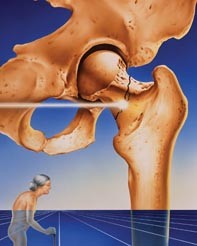Peer Reviewed
Feature Article Women’s health
Postmenopausal osteoporosis: identifying women at risk and selecting appropriate agents
Abstract
Postmenopausal osteoporosis is now occurring in epidemic proportions. GPs have the responsibility of identifying women at high risk of osteofragility fractures.
Key Points
- The prevalence of osteofragility fractures in postmenopausal women is rapidly escalating. These fractures lead to an increase in morbidity and premature mortality.
- The fracture risk in postmenopausal women should be calculated according to both osteoporotic risk factors and bone mineral density (BMD) T-scores.
- Secondary causes of osteoporosis should always be excluded prior to initiating antiosteoporotic therapies.
- Specific pharmacological agents are rebatable on the PBS for postmenopausal women aged 70 years or over with a BMD T-score of -3.0 or less (primary prevention) and postmenopausal women with a BMD T-score of -2.5 or less and a prior osteofragility fracture (secondary prevention).
- Anticatabolic therapies are considered first-line agents for women with osteofragility fractures.
- Anabolic agents should be considered in women who continue to have fractures despite optimal anticatabolic therapies.
- Simpler dosing regimens, improved drug tolerability and patient compliance programs encourage women to continue therapies for longer periods of time, thereby enhancing therapeutic outcomes.
Purchase the PDF version of this article
Already a subscriber? Login here.

